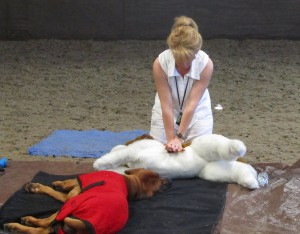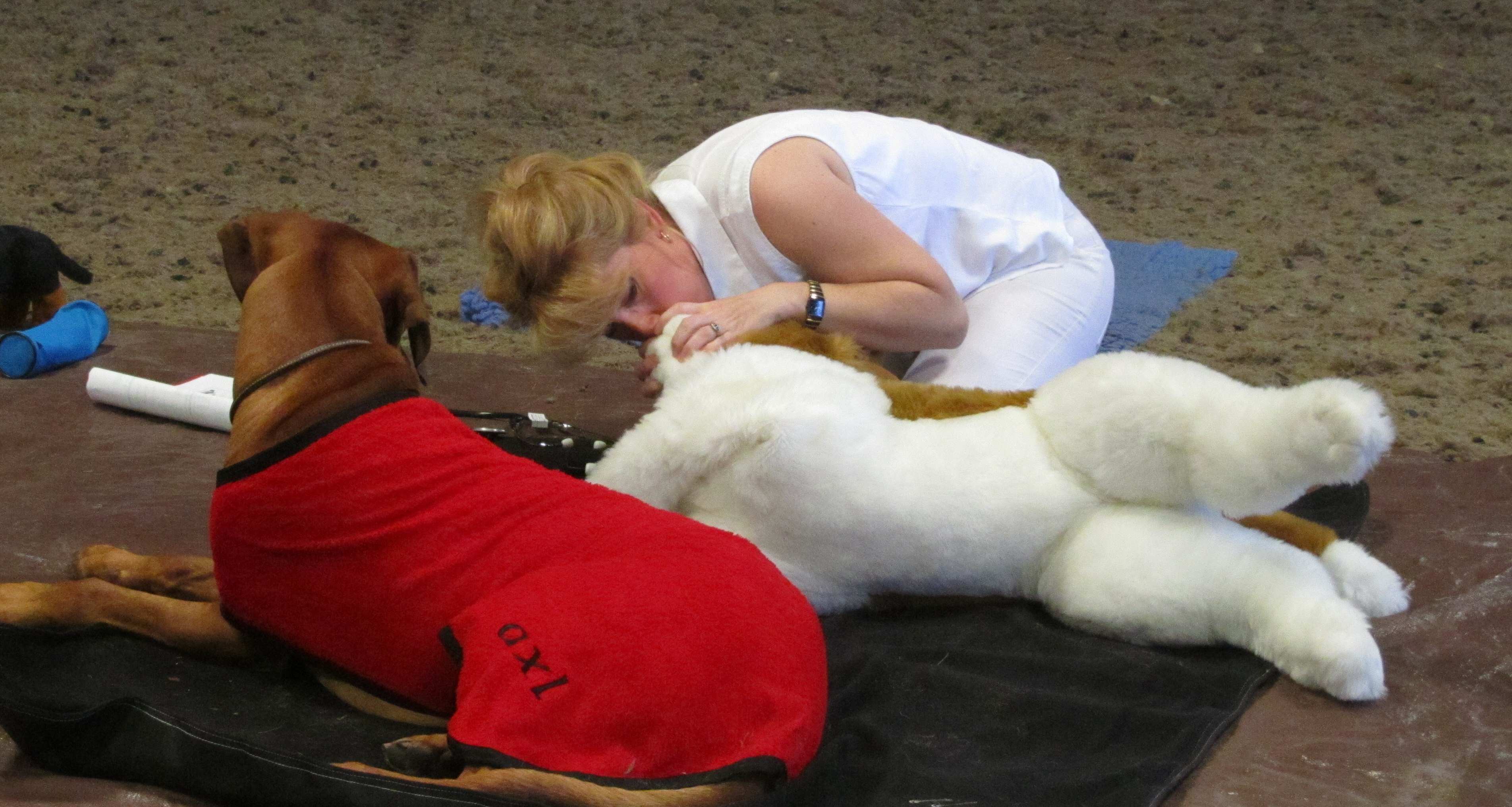C = Cardio (heart)
P = Pulmonary (breathing/lungs)
R = Resuscitation (the act of beating the heart and breathing for a third party to revive them)
.
.
CPR is ONLY performed when the animal is neither breathing nor has a heart beat.
.
If he DOES have a heart beat but is NOT breathing, perform Artificial Respiration instead
(see blog on Artificial Respiration for clear instruction on carrying out this procedure)
.
CPR: Where to place your hands?
.
Knowing where to place your hands during CPR for a dog is something that worries many people. We generally say aim for between the 4th-6th rib, but an easy way to get the “spot” is by lying the dog on his right side, feet pointing away from you and you kneeling at his back. Bend his front leg back and where the elbow touches the ribcage, this is pretty much where you want to be.
.
For a deep chested dog like a Ridgeback/Whippet/Greyhound etc, use this method and then aim about an inch further forwards towards the armpit. This slight modification will make it even more effective for such breeds.
.
For a barrel chested dog such as a bulldog/staffy, lie the dog on his back as you would a human and position your hand in the middle of the chest, on the breast bone above the point where the ribs meet.
.
.
How many hands should I use?
.
Medium or Large dog: Use TWO hands, one on top of the other, with fingers interlocked
Small dog: Use the heel of ONE hand
Tiny dog: Use ONE hand around his ribcage applying pressure with the muscle at the base of your thumb.
Newborn pups (or even cats): Hold around the ribcage as above, and squeeze pressing with your thumb pad only.
.
.
ONLY ever perform CPR on an animal (or human for that matter!!) that has no pulse.
.
.
*** IMPORTANT ****
Change of information regarding CPR for dogs.
The ratio of chest compressions to breaths in dogs has been revised following a study performed in 2012. The ratios for canine CPR now fall into line with human ratios ie:
30 chest compressions to every 2 breaths.
The speed of compressions is also now consistent with human CPR in that we aim for a rate of 100-120 beats per minute.
Before you commence the 30:2 compressions to breaths ratio sequence for a dog, remember to administer 5 good rescue breaths to top them up with oxygen before you start. There is no point in commencing compressions if there is no oxygen in the blood stream to transport!

.
Tilt the dog’s head back to straighten the airway and pull the tongue forward, right out of the mouth. Now move the tongue to the side so that it slots out through the gap just behind the large fang tooth. Hold the dog around the muzzle with both hands which will grip the tongue in place with the teeth and prevent it going back into the dog’s mouth.
.
Now breathe down the nostrils (for a very small dog you can put your mouth all the way around the nose and muzzle to ensure you do not breathe too hard).
.
Once your 5 breaths have gone in and you have seen the ribcage rise with each breath, you can then commence the 30:2 sequence.
.

.
Continue for 1 minute then stop to check for a pulse, breathing and signs of life. If no signs are detected, continue for 2 minutes and recheck then another 2 minutes etc. If there is no change after 20 minutes …. Rainbow Bridge is calling.
.
While it is always preferable to administer the chest compressions with the dog lying on his right side so that the left side of his chest (and therefore his heart) is uppermost, CPR can still be done with the dog on the other side too.




